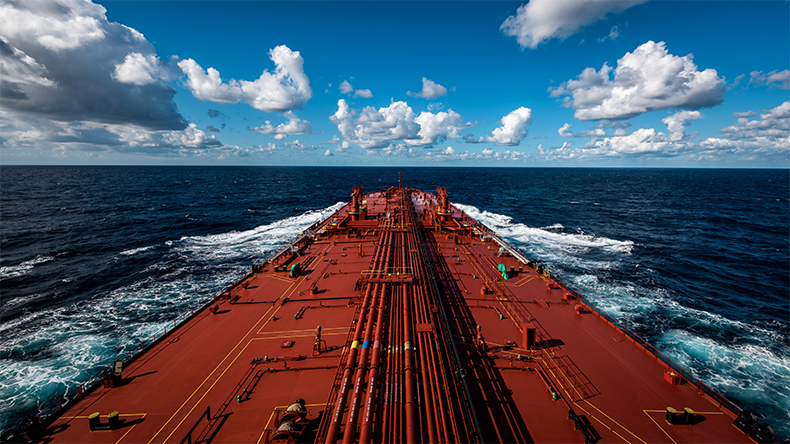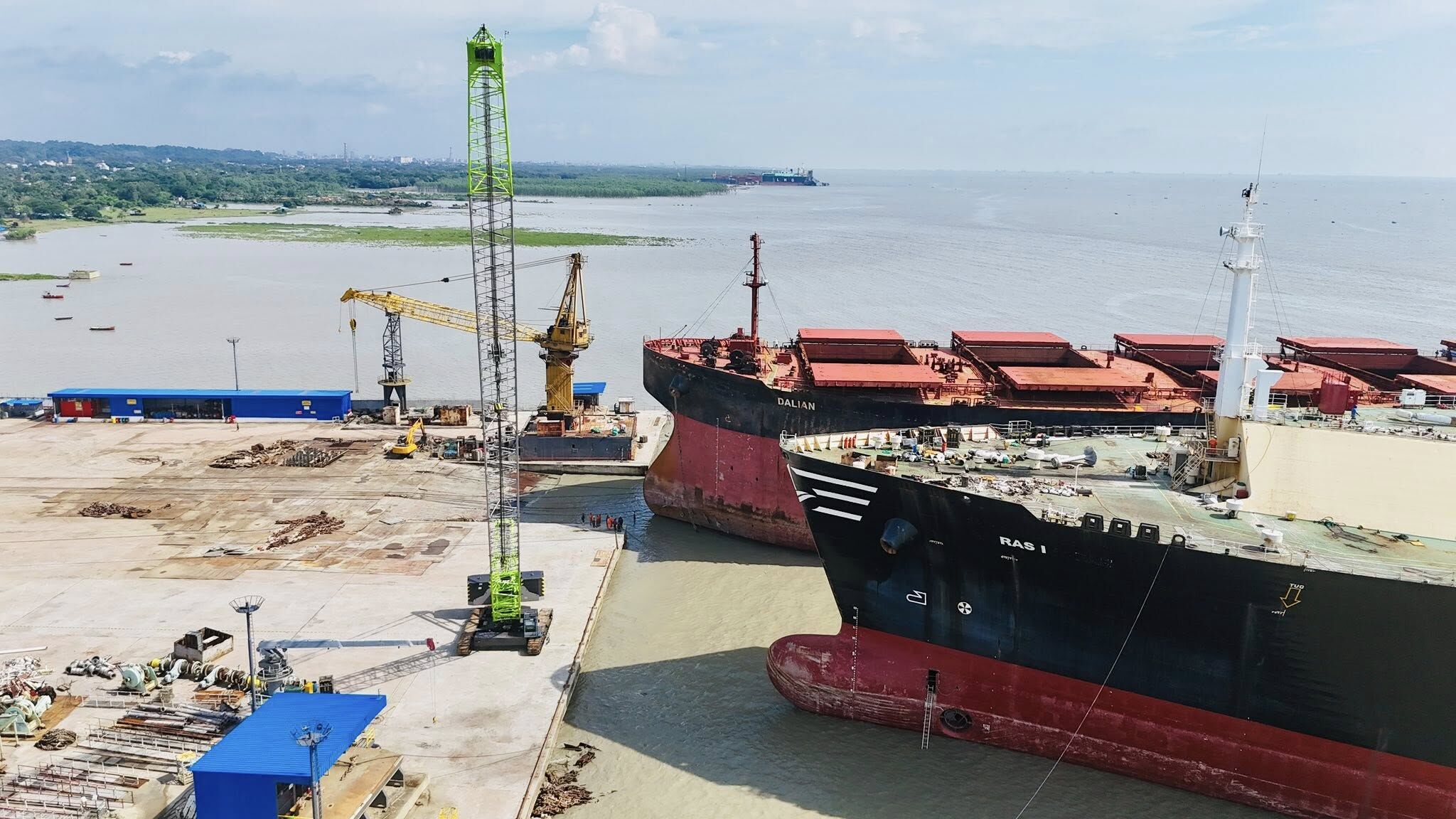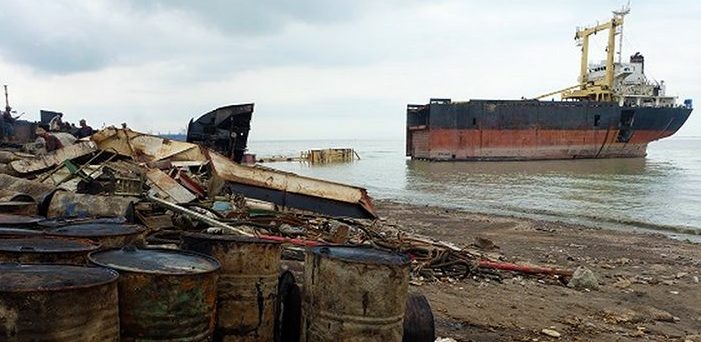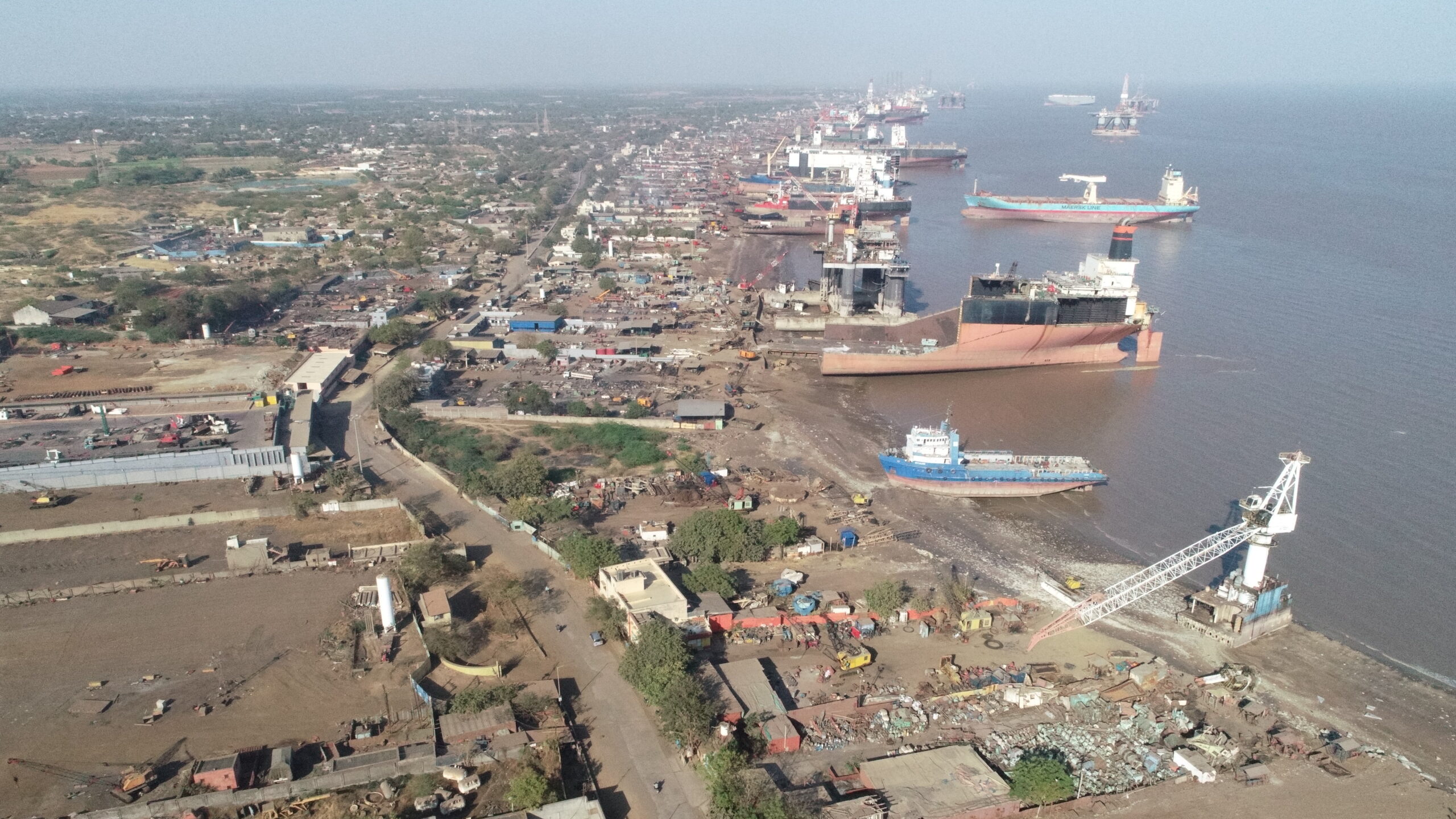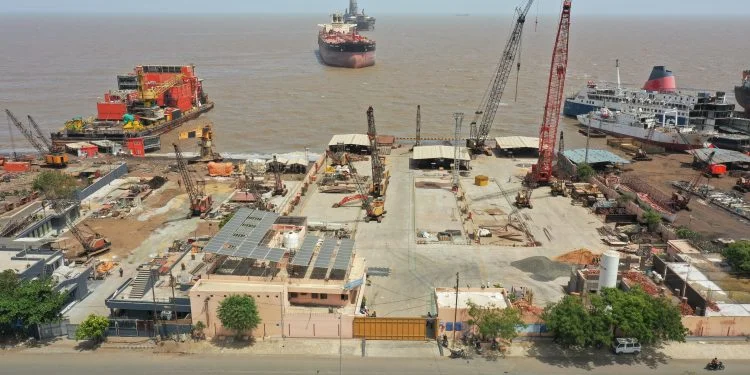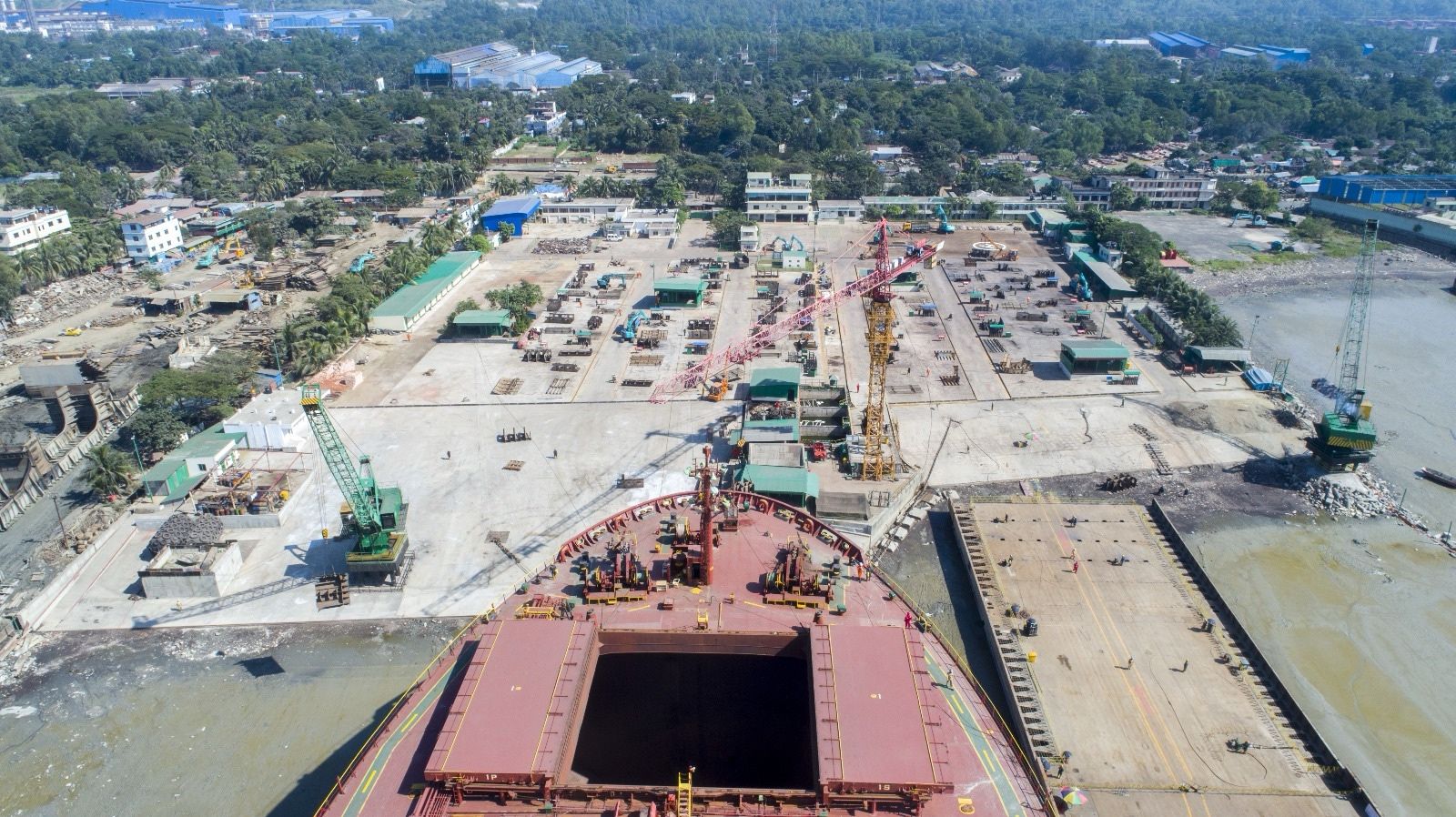Red Sea Avoidance Continues to Restrict Recycling of Aged Boxships
With Red Sea route closures likely to persist into 2026, containership recycling stays at historic lows, constrained by trade dynamics and falling scrap prices
London| 16 July 2025
The containership recycling market has continued to stagnate through the first half of 2025, as operators steer clear of the Red Sea and broader market forces blunt the economic incentive to dispose of ageing tonnage. According to latest data, only 10 containerships, with a combined capacity of just 5,500 teu, were sold for scrapping between January and June—marking one of the lowest half-year figures in recent memory.
This anaemic activity comes as the geopolitical crisis in the Red Sea shows no sign of abating. Shipping lines, already strained by rerouted schedules around the Cape of Good Hope, are clinging to older tonnage to maintain service reliability, even at the cost of operational efficiency. As the industry adapts to this prolonged disruption, experts warn that boxship recycling may remain subdued at least until the first half of 2026.
Geopolitical Gridlock Delays Decommissioning
The Red Sea, once a vital artery for Asia-Europe and East Africa-Mediterranean trade, remains fraught with security concerns amid ongoing Houthi attacks and naval tensions in the Bab el-Mandeb Strait. Most major container lines, including Maersk, CMA CGM, Hapag-Lloyd, and MSC, continue to avoid the region, forcing rerouting of vessels around southern Africa—a voyage that can add nearly two weeks to transit times and require additional tonnage to maintain sailing frequency.

“The diversion around the Cape has significantly tightened vessel supply,” said Rahul Menon, a shipping analyst at Braemar. “Even 25- to 30-year-old containerships that would normally be candidates for the beach are now being retained and chartered out to maintain schedule integrity.”
The shift has put a premium on operational ships, regardless of age or fuel inefficiency. Charter rates for smaller containerships have remained firm—well above recycling values—thereby disincentivizing shipowners from sending ageing vessels to South Asian recycling yards.
Freight Market Fundamentals Delay Scrapping
Surprisingly strong container load factors and a shortage of available charter market tonnage have compounded the recycling slowdown. Despite widespread fears of overcapacity following the delivery of a record number of newbuild megaships in 2024, actual cargo volumes have held up better than expected in 2025.
“The rebound in global consumer demand, particularly in North America and Southeast Asia, has helped absorb much of the new capacity,” noted Sophie Lacoste, senior container market analyst at MSI. “Lines are running ships fuller than anticipated, and with more cargo being moved via longer routes, there’s limited appetite to retire vessels—even those built in the early 1990s.”
Compounding the situation is a surprising level of resilience in freight rates across several east-west trade lanes. While spot rates have cooled from early-year highs, they remain comfortably above breakeven levels for many carriers, offering little immediate financial pressure to downsize fleets.
Scraping Economics No Longer Attractive
Falling scrap prices have dealt yet another blow to the economics of recycling. After peaking in mid-2024 amid robust steel demand in India and Bangladesh, prices for light displacement tonnage (ldt) have gradually trended downward through the first half of this year. As of mid-July, average prices for containerships in Alang, Chattogram, and Gadani hover between $460 and $490 per ldt—well below the $550 highs seen last year.
“Owners are rightly questioning whether now is the right time to exit aging vessels,” said Nikhil Chandra, a cash buyer with GMS. “Given the chartering opportunities still available for older ships, even at moderate rates, many are choosing to extend their vessels’ lives rather than settle for lower scrap values.”
As a result, speculative sales have all but disappeared. Instead, most scrapping activity this year has been driven by extenuating circumstances, such as accidents or fires, rather than strategic fleet optimization.
A Case in Point: The Solong
The largest containership sold for recycling so far this year underscores this trend. The 803 teu Solong, built in 1999, was declared a total loss after suffering extensive damage in a collision with the Stena Immaculate, a medium-range product tanker, off the UK’s east coast in March. The impact triggered a fire onboard the Solong, rendering the vessel uneconomical to repair.
Deemed beyond salvage, the vessel was eventually towed to Turkey’s Aliaga yard for green recycling under EU-compliant procedures. While the incident did not involve loss of life or major pollution, it highlighted the fragility of ageing feeder fleets and the potential risks of continued reliance on such vessels.
“The Solong wasn’t scrapped because it was too old—it was scrapped because it was too damaged,” noted Chandra. “Without that incident, it would likely still be trading in Northern Europe or the Med.”
The Outlook: Slow Recovery Expected
Looking ahead, few expect a meaningful uptick in boxship scrapping before mid-2026. Even if Red Sea routes reopen earlier than forecast, the lag effect of today’s tight charter market and fleet utilisation will likely carry over well into next year.
Analysts estimate that more than 1.8 million teu of containership capacity is technically over 20 years old—a traditional threshold for scrapping—but remains operational. Many of these vessels are owned by non-operating owners and leased out to regional or second-tier lines. As long as freight remains relatively profitable and service reliability is key, these older units will continue to find employment.
“Unless we see a major freight downturn, sharp drop in charter rates, or a return of Red Sea security, the recycling tide won’t turn,” Lacoste added.
Additionally, environmental regulation may eventually push owners toward retirement. The implementation of stricter Carbon Intensity Indicator (CII) ratings and the looming threat of higher fuel costs under future EU ETS and IMO climate measures could render older tonnage unviable, but these impacts will likely play out only from 2027 onwards.
South Asian Yards Wait in Vain
For the recycling industry in Alang, Chattogram, and Gadani, the lull in boxship scrapping has translated into lean times. While tankers and bulkers continue to trickle in, container vessels—typically more complex to dismantle—have become increasingly rare.
Ship recyclers say they are prepared and certified to handle containerships under the Hong Kong Convention, which officially entered into force in June 2025, but they simply aren’t receiving the tonnage.
“Boxships bring better steel, and their scrapping supports many downstream industries,” said Prakash Patel, manager at a yard in Alang. “We were hoping for more arrivals this year after IMO compliance rules kicked in, but owners are holding back.”
Until a confluence of geopolitical stability, weak freight markets, and stronger scrap prices realigns the incentives, the world’s elderly containerships are likely to continue trading rather than be sent for dismantling.
Key Figures – First Half 2025 (Containership Recycling)
-
Number of containerships scrapped: 10
-
Total capacity removed: 5,500 teu
-
Largest ship scrapped: Solong (803 teu)
-
Average scrap price: $460–$490 per ldt
-
Red Sea rerouting continues: Yes
-
Expected Red Sea route resumption: Not before H1 2026
Author: shipping inbox
shipping and maritime related web portal




